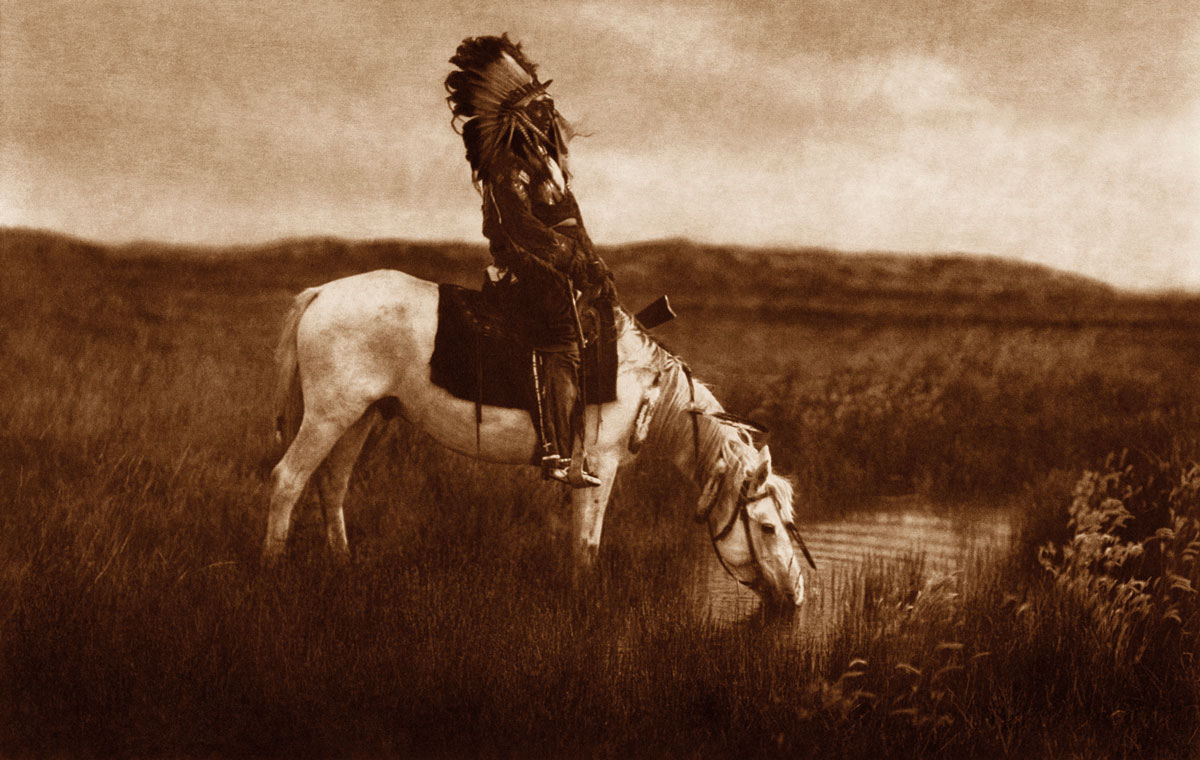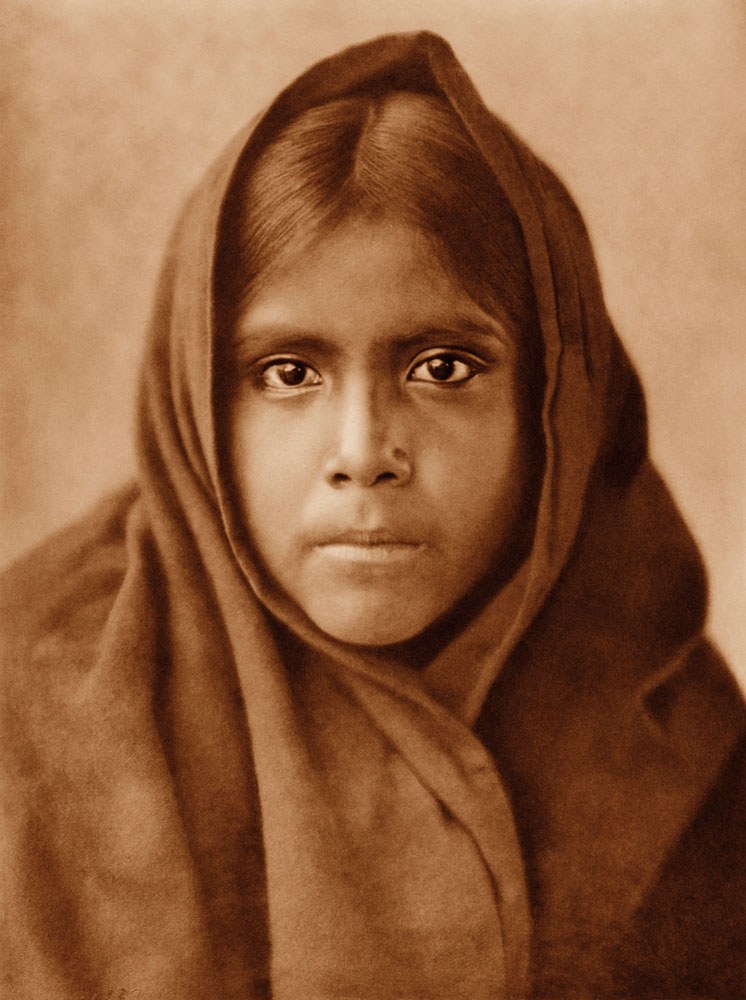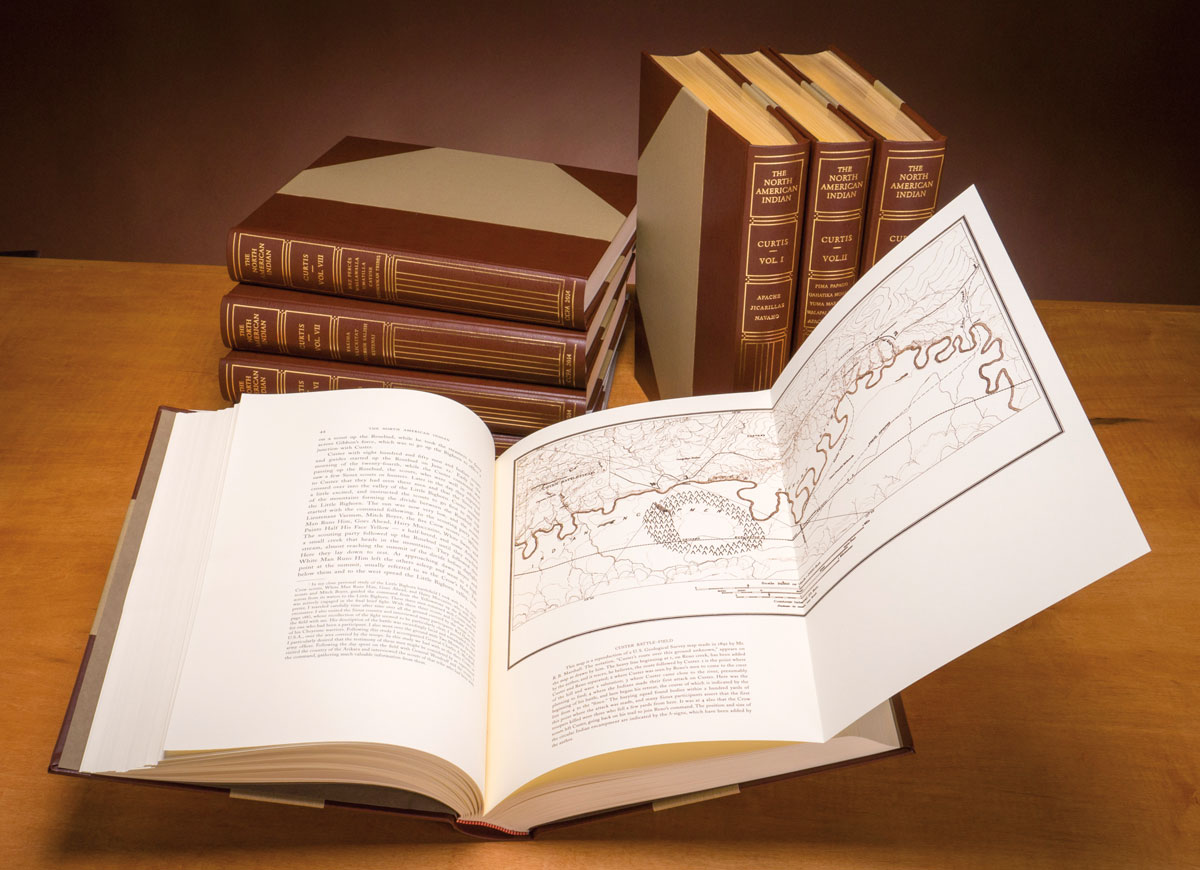A ‘Most Gigantic Undertaking’
A Republication of The North American Indian brings this iconic publication to new audiences.
From 1900 to 1930, Edward S. Curtis created an unparalleled body of work which has become even more relevant today. With financial support from J.P. Morgan, Curtis’s magnum opus was realized in the form of a massive 20-Volume, 20-Portfolio set of books called The North American Indian comprising 5,000 pages of text, all hand-printed and hand-bound. President Theodore Roosevelt was Curtis’s primary champion.
This massive undertaking required the assistance of over 60 individuals. In all, the publication cost the equivalent of $35 million in 2018 dollars. At the time of its creation it was heralded as “the most gigantic undertaking since the making of the King James edition of the Bible.”
Notwithstanding international acclaim, Curtis and his company were essentially insolvent throughout the project, says Christopher Cardozo of Christopher Cardozo Fine Art. Yet despite virtually impossible odds, Curtis persisted and accomplished what many people thought was impossible.
“The North American Indian was created at a time when Native Americans didn’t know their future as a people or as a culture,” Cardozo said. “This work was a very intentional act of stewardship on the part of Curtis and the 10,000 Native people who participated and co-created this project with Curtis.”
Cardozo, who has been collecting, researching, and preserving the work of Curtis for 44 years, has now embarked on a republication of The North American Indian to coincide with the 150th anniversary of Curtis’s birth on February 16, 2018. His mission is to make Curtis’s work more widely understood and accessible, in part, by recreating 75 sets of the complete series, much of it by hand.
Today, there are approximately 220 original sets known to exist. A complete set can now sell for up to $3 million. With few sets in existence, and such prohibitive costs, it is difficult for researchers and the public to gain access to the original text and photographs.
“Curtis’s work is fundamentally about beauty, heart, and spirit, and that’s what makes this work so compelling.” Cardozo said. “We’ve reached more than 10 million people worldwide with books, lectures, interviews, and exhibitions. Every time I’ve had an opening or given a lecture, there are people who are moved to tears. The authenticity and beauty of this compelling work illuminates the heart and soul of Native peoples.”
In producing the 75 sets, Cardozo and his team have invested tens of thousands of hours to artisanally re-create the 2.5 million words of the original text and re-master all 2,234 photographs. They located a bindery that uses the same historic techniques as Curtis’s original books to complete the books to help achieve further authenticity.
A few of the republication sets are still available for purchase. Others have already been placed with the Morgan Library and Museum, Harvard, and several other major universities. Others have been donated to tribal colleges. As word has spread, many Native Americans and Native elders have been visiting these institutions to research their ancestry and tribal histories.
“It’s an honor to play a small part in this project,” Cardozo says. “It is my personal mission to bring this work to new and different audiences in new and different ways while helping preserve the originals.”










